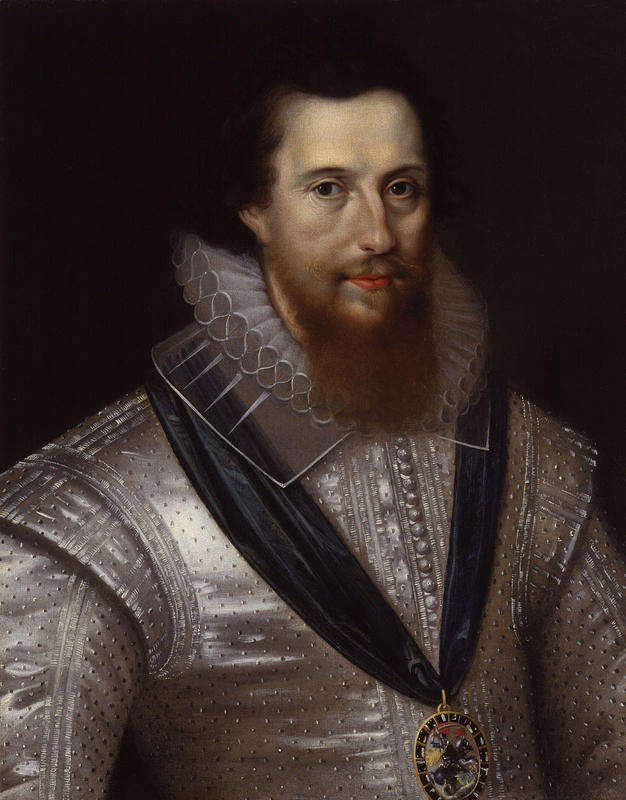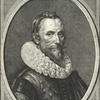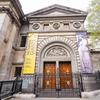More about Robert Devereux, 2nd Earl of Essex

Sr. Contributor
Robert Devereaux, 2nd Earl of Essex may seem decked out like Billy Porter about to hit the red carpet at the Met Gala, but he’s actually dressed in the robes of the Order of the Garter, the highest rank of British knighthood.
Sir Henry Lee probably commissioned this portrait to celebrate his own election to the Order, which Devereux had advocated. Lee was a primary patron of Marcus Gheeraerts the Younger, commissioning many portraits by the artist, notably the famous ‘Ditchley portrait’ of Queen Elizabeth I. Gheerhaerts apparently painted this in 1597 from another portrait celebrating Devereux's triumph over the Spanish in the Capture of Cadiz the previous year. After the Elizabethan navy’s historic defeat of the invading Spanish Armada in 1588 (with a little help from the nasty English weather), Anglo-Spanish hostilities remained hot. Fearing that the Spanish were amassing another Armada to avenge themselves on the English, Devereux sailed for Cadiz on a mission to capture the famed Spanish treasure galleys and preemptively crush the new Armada. With swashbuckling dash worthy of the hunky Hollywood actors who have played him on the screen, Devereux reportedly scaled the walls almost single-handedly, taking the city with much pillaging and burning after gallantly offering women safe passage in their finest gowns and jewels.
Devereux’s raid was an audacious victory for the English, if not a wholesale success. The raiders failed to capture or destroy the Armada, which as predicted launched a second invasion of England but ran into another nasty storm, again limping away in defeat. Furthermore, the Spanish set fire to their own treasure fleet, sinking it in the harbor before the English could get their hands on it. Even so, the English got their fair share of loot from the sacking of the rich port city, including a hoard of sherry. Sherry became one of England’s most popular drinks, contributing to a folk story that Devereux’s men raided Cadiz just to get the booze (other sources attribute the capture of the sherry to Sir Francis Drake’s previous 1587 raid on Cadiz). While England was literally drunk on victory, Spain declared bankruptcy.
Devereux returned to England in glory and cemented his position as Queen Elizabeth I’s favorite, a favor aided by his talents in courtly love. Courtly love-making was basically high-stakes flirting between nobles, often (though not always) chaste. Whether Elizabeth and Devereux’s making of said love was chaste or nay is subject to speculation, but according to contemporary servants’ gossip, “even at night my lord is at cards or one game or another with her, that he cometh not to his own lodging till the birds sing in the morning.” It was in any case a relationship of fiery passion as each party had “a nature not to be ruled.” The Queen even once slapped Devereux, provoking him to nearly draw his sword on her.
Not surprisingly given their hot-blooded temperaments, Devereux’s favor was short-lived. Following a disastrous campaign against rebels in Ireland, Devereux was effectively placed on house arrest. Frustrated by his fall from grace, he attempted an abortive coup and was decapitated for treason on Tower Green (the last beheading at the Tower of London). According to Romantic legend, Elizabeth had given Devereux a ring as reward for the Capture of Cadiz with instructions to send it to her if he ever needed help. As he awaited execution, he sent the ring in the care of the disloyal Countess of Nottingham, who kept it from the Queen. Allegedly, the Countess confessed the betrayal on her deathbed, to which Elizabeth replied, “May God forgive you, Madam, but I never can.” Though most historians dismiss the story of the ‘Essex Ring’ as mere myth, a ring identified as such exists in the Royal Collection.
Devereux’s reputation recovered during the reign of King James I, and this portrait may also date from that later period, when Sir Henry Lee commissioned similar portraits of himself and the Prince of Wales. Sir Henry was interesting in his own right, living in open sin with his mistress Anne Vavasour. His cousin Captain Thomas Lee was implicated in Devereux’s treason plot and executed. The portrait remained in his ancestral collection at Ditchley until Horold Dillon, 17th Viscount Dillon. Dillon was a noted antiquarian and Olympic horseman who served as chairman of the trustees of the National Portrait Gallery from 1894 to 1928, when he bequeathed much of the Ditchley collection to the NPG, though this painting was in a private collection until 1974. Dillon had his own portrait painted by Georgina Brackenbury, a militant suffragist who used her studio as a front for her underground activism, suggesting the seemingly stuffy Viscount may have had a radical bent.
Sources
- Adams, Simon. “Capture of Cadiz.” In the Encyclopedia Britannica. Accessed June 6, 2020. https://www.britannica.com/event/Capture-of-Cadiz-1596#info-article-his…
- Bedi, Bharti, ed. Timelines of History: The Ultimate Visual Guide to the Events That Shaped the World. New York: DK Publishing, 2018.
- Beer, Reginald. “The history of Robert Devereux 2md Earl of Essex.” In Your Area: Newsroom, February 8, 2019. https://www.inyourarea.co.uk/news/robert-devereux-2nd-earl-of-essex/
- Brown, Pete. Shakespeare’s Pub: A Barstool History of London as Seen Through the Windows of Its Oldest Pub ~ The George Inn. New York: St. Martin’s Press, 2012.
- Cavendish, Richard. “The Execution of the Earl of Essex.” History Today, February 2, 2001. https://www.historytoday.com/archive/months-past/execution-earl-essex
- Editors of Encyclopedia Britannica. “Robert Devereaux, 2nd earl of Essex.” In the Encyclopedia Britannica. Accessed June 8, 2020. https://www.britannica.com/biography/Robert-Devereux-2nd-earl-of-Essex
- Emerson, Kathy Lynn .Internet Archive: Wayback Machine. “A Who’s Who of Tudor Women: U-V.” Last modified August 15, 2014. Accessed June 6, 2020. https://web.archive.org/web/20140815045930/http://www.kateemersonhistor…
- Internet Archive: Wayback Machine. “Harold, Viscount Dillon.” Last modified April 18, 2020. Accessed June 8, 2020. https://web.archive.org/web/20200418040626/https://www.sports-reference…
- Motley, John Lothrop. History of the United Netherlands, 1595-96. Project Gutenberg, 2004. http://www.gutenberg.org/cache/epub/4868/pg4868-images.html
- National Portrait Gallery. “Robert Devereux, 2nd Earl of Essex.” Accessed June 6, 2020. https://www.npg.org.uk/collections/search/portraitConservation/mw02133/…
- O’Sullivan, Margaret . “Brackenbury, Georgina Agnes (1865-1949).” Oxford Dictionary of National Biography (Oxford University Press, 2015).
- “Robert Devereux.” In Prabook (World Biographical Encyclopedia). Accessed June 8, 2020. https://prabook.com/web/robert.devereux/3738685
- Schajer, David B. Shakespeare Solved (blog). July 2, 2013. Accessed June 6, 2020. https://www.citefast.com/styleguide.php?style=Chicago&sec=Blog
- Schomberg, Isaac. Naval Chronology, Or an Historical Summary of Naval and Maritime Events from the Time of the Romans, to the treaty of Peace 1802. London: T. Egerton, 1802.
- Trevelyan, Raleigh. Sir Walter Raleigh: Being a True and Vivid Account of the Life and Times of the Explorer, Soldier, Schola, Poet, and Courtier--The Controversial Hero of the Elizabethan Age. New York: Henry Holt and Company, 2002.
- Westminster Abbey. “Elizabeth I: Essex Ring.” Accessed June 8, 2020. https://www.westminster-abbey.org/abbey-commemorations/royals/elizabeth…
- Dr. Whitelock, Anna. “Elizabeth I’s love life: was she really a ‘Virgin Queen’?” History Extra, January 31, 2019. https://www.historyextra.com/period/elizabethan/elizabeth-i-love-life-w…











